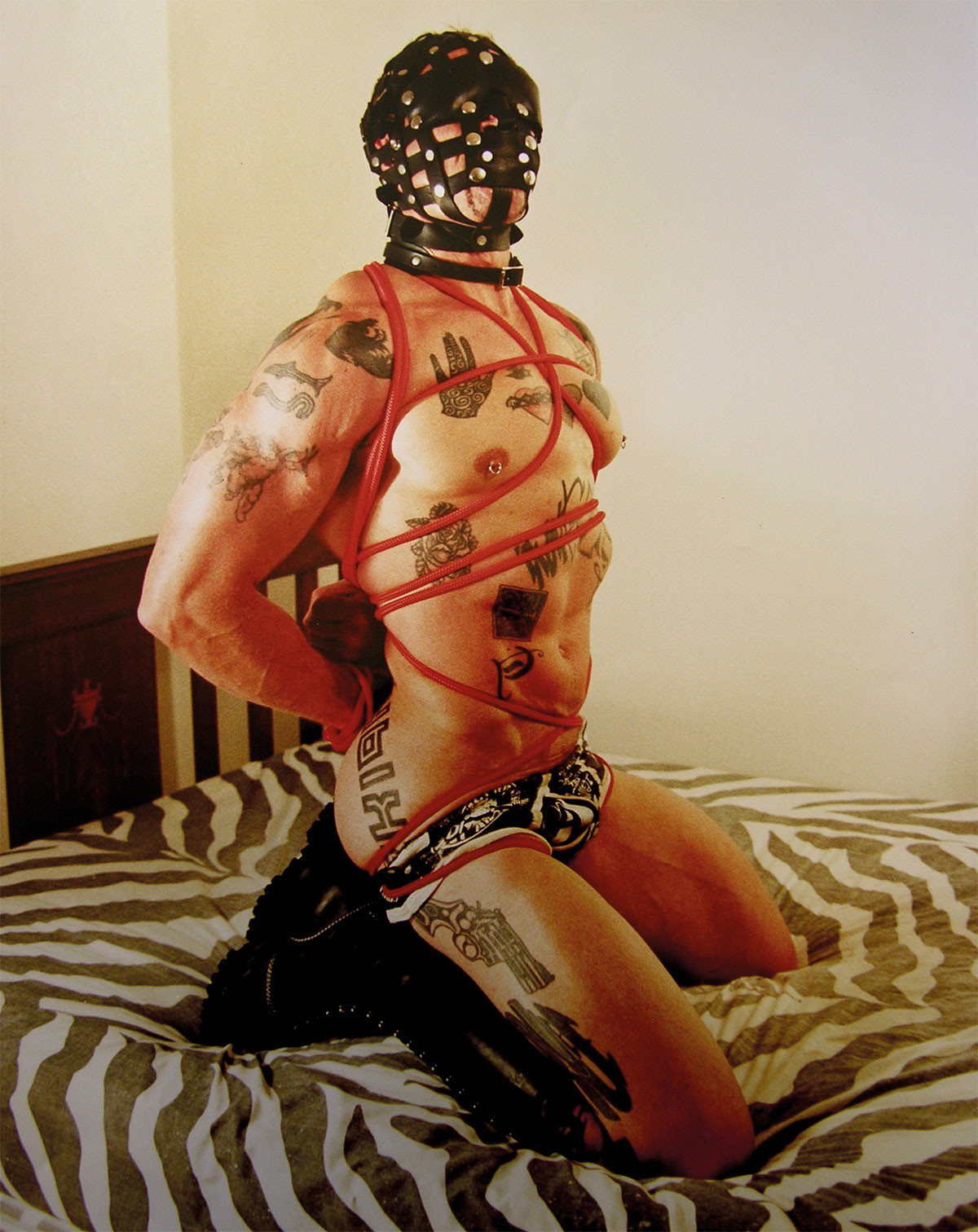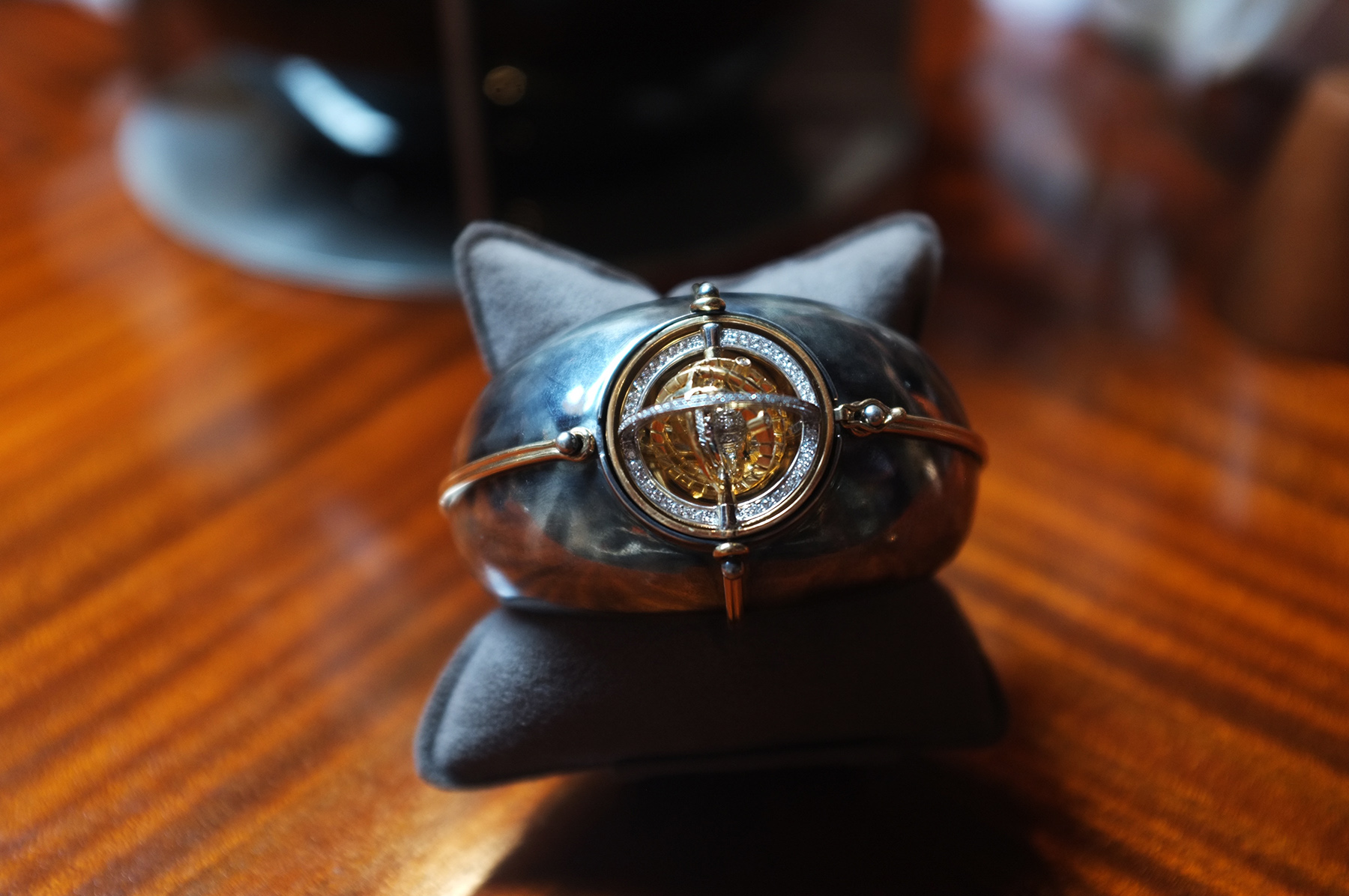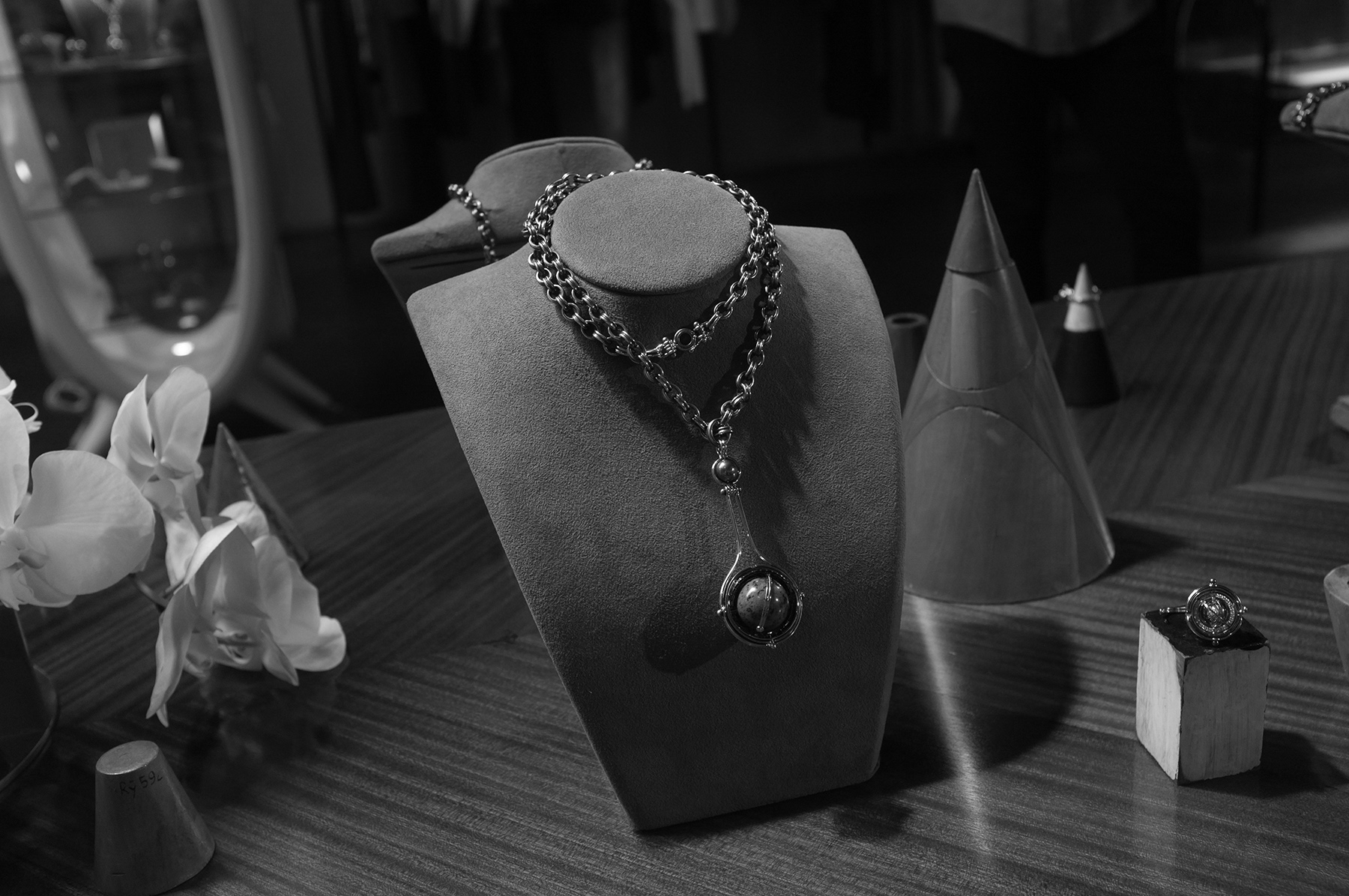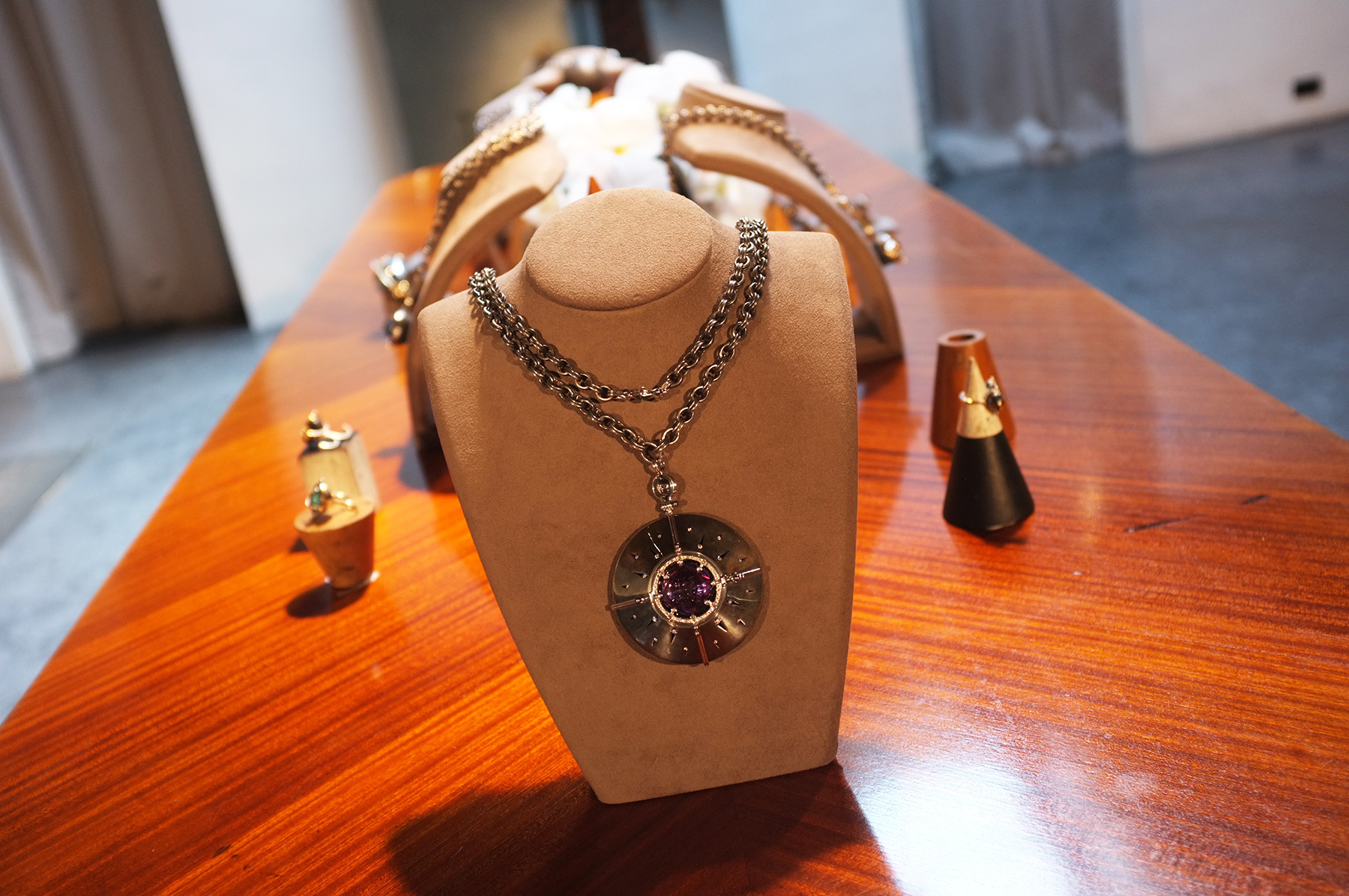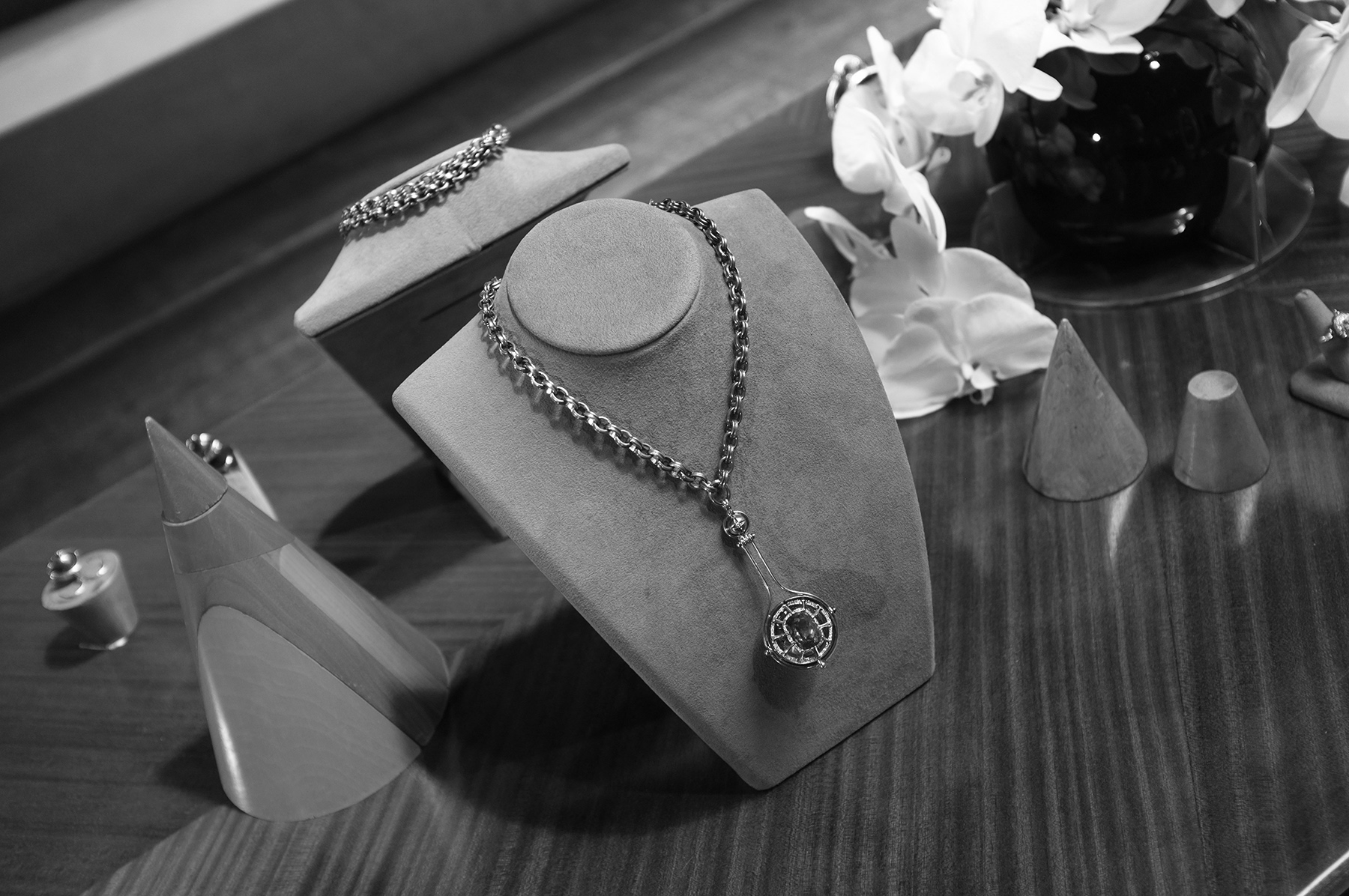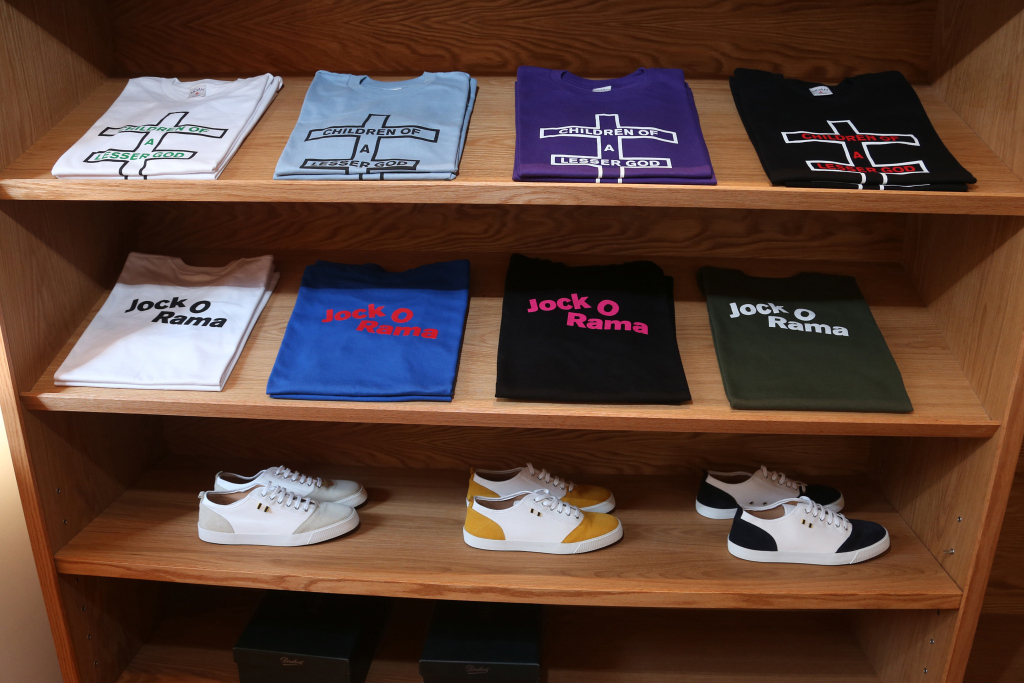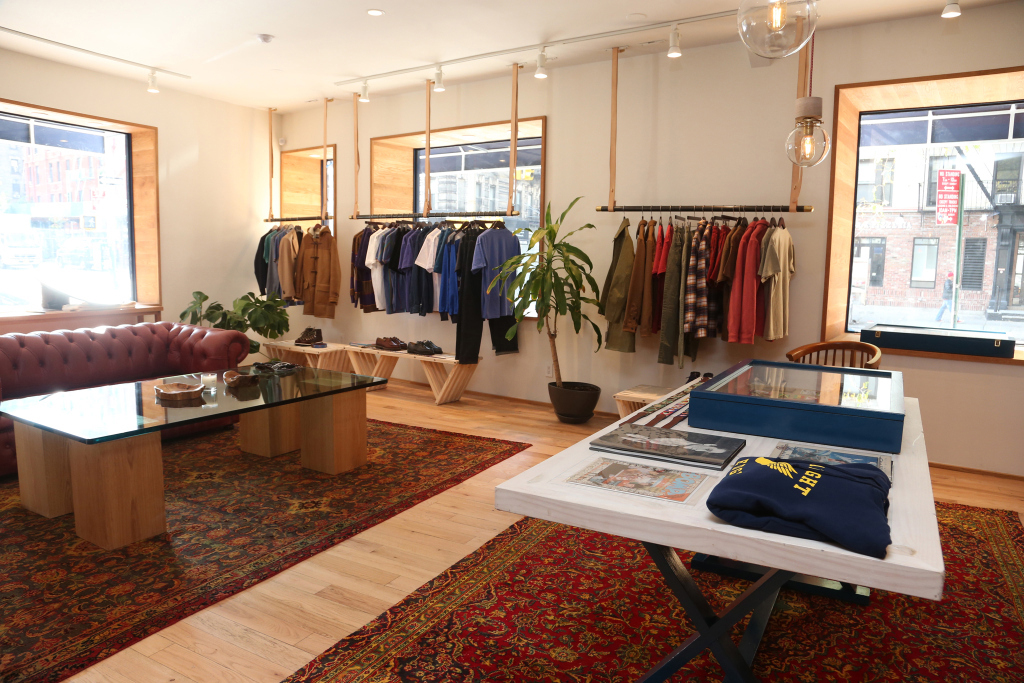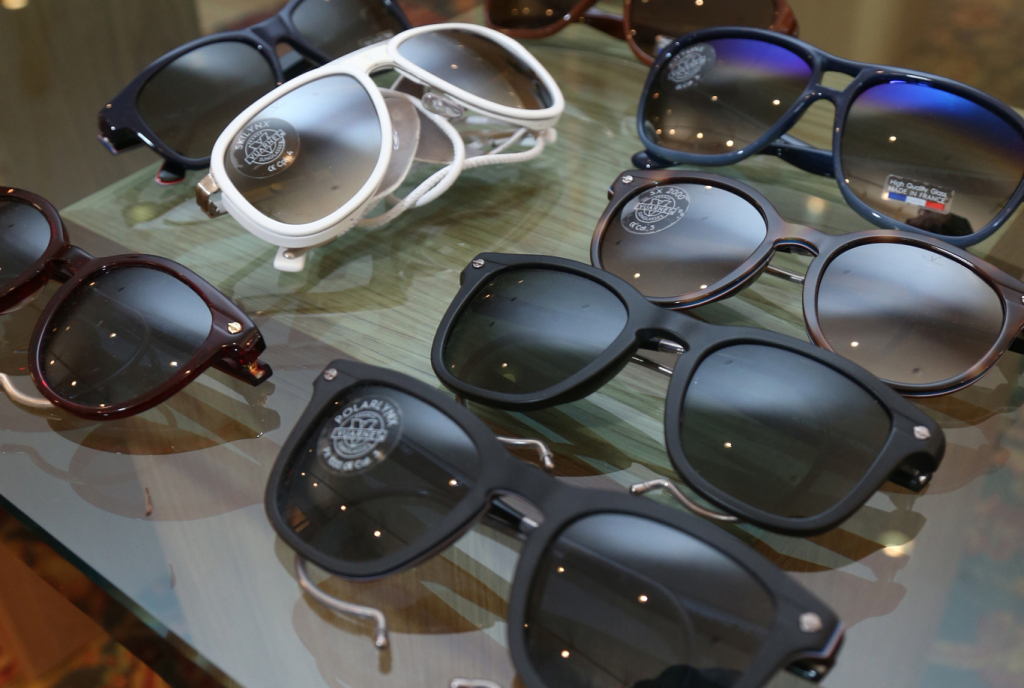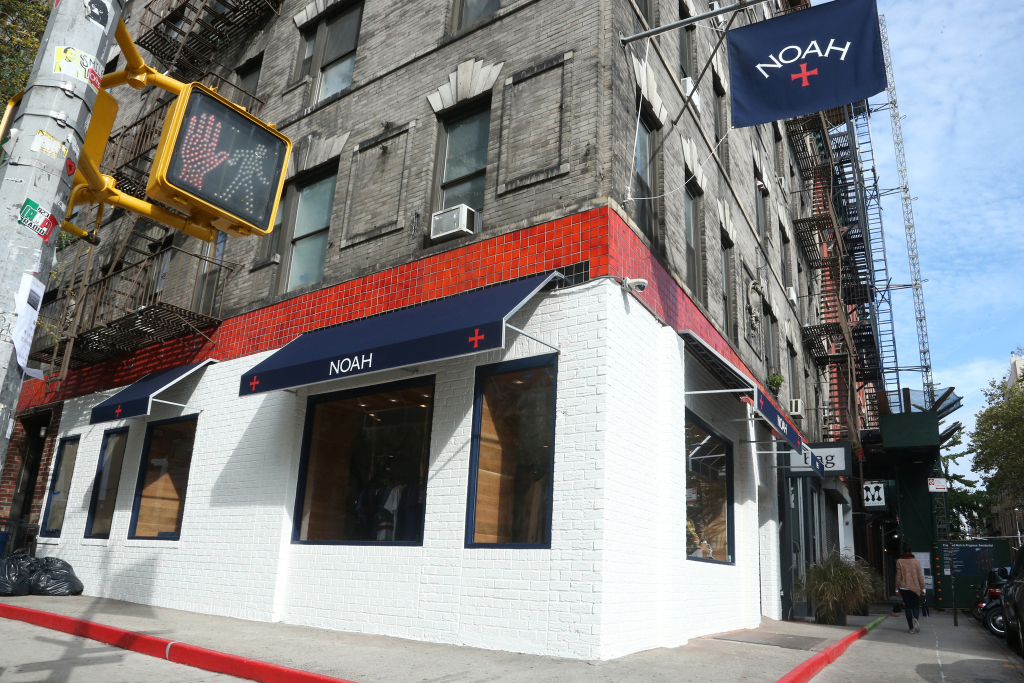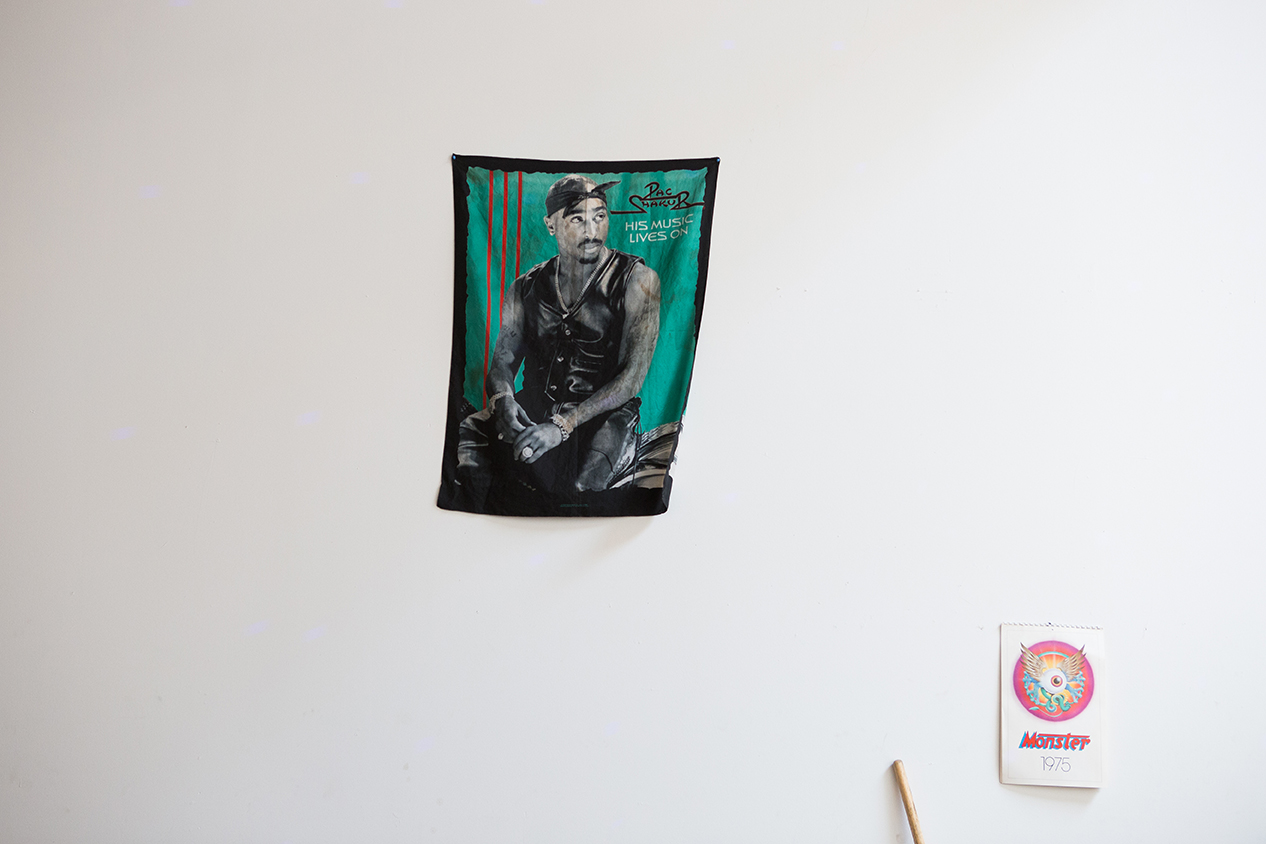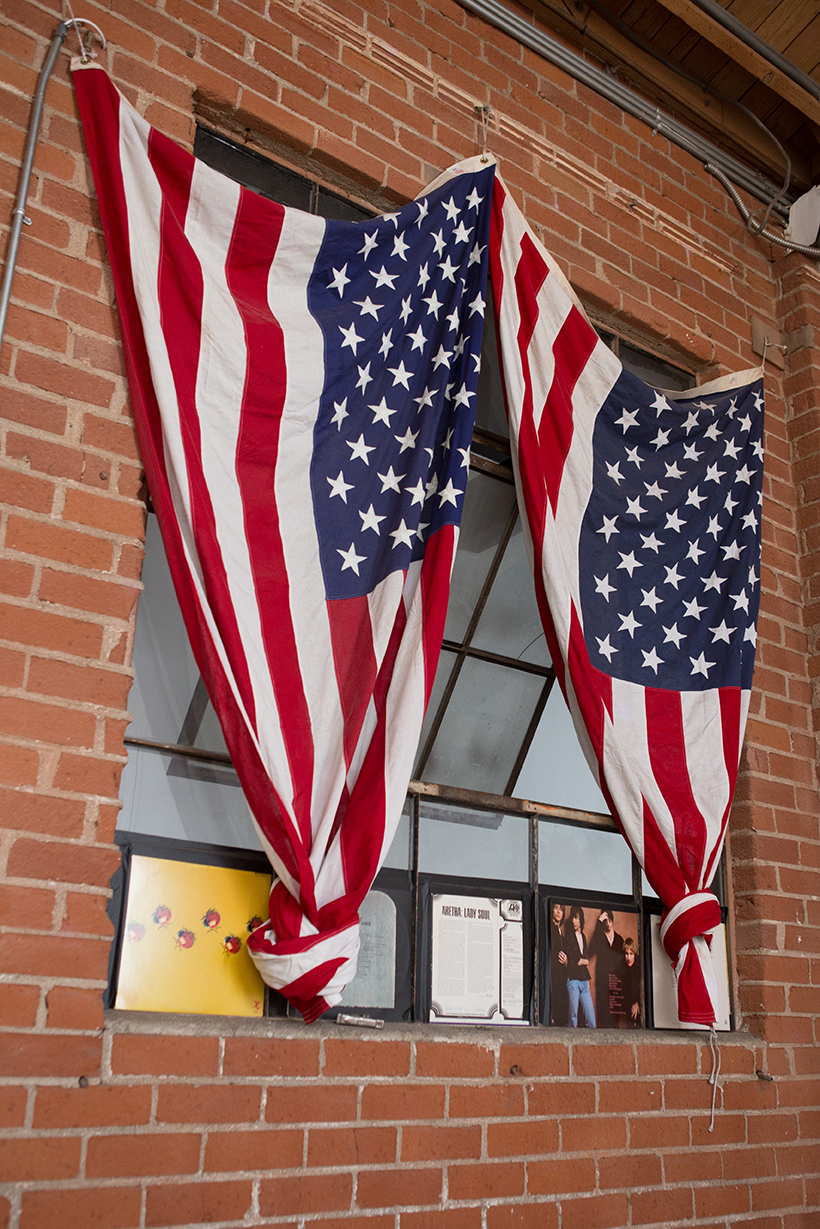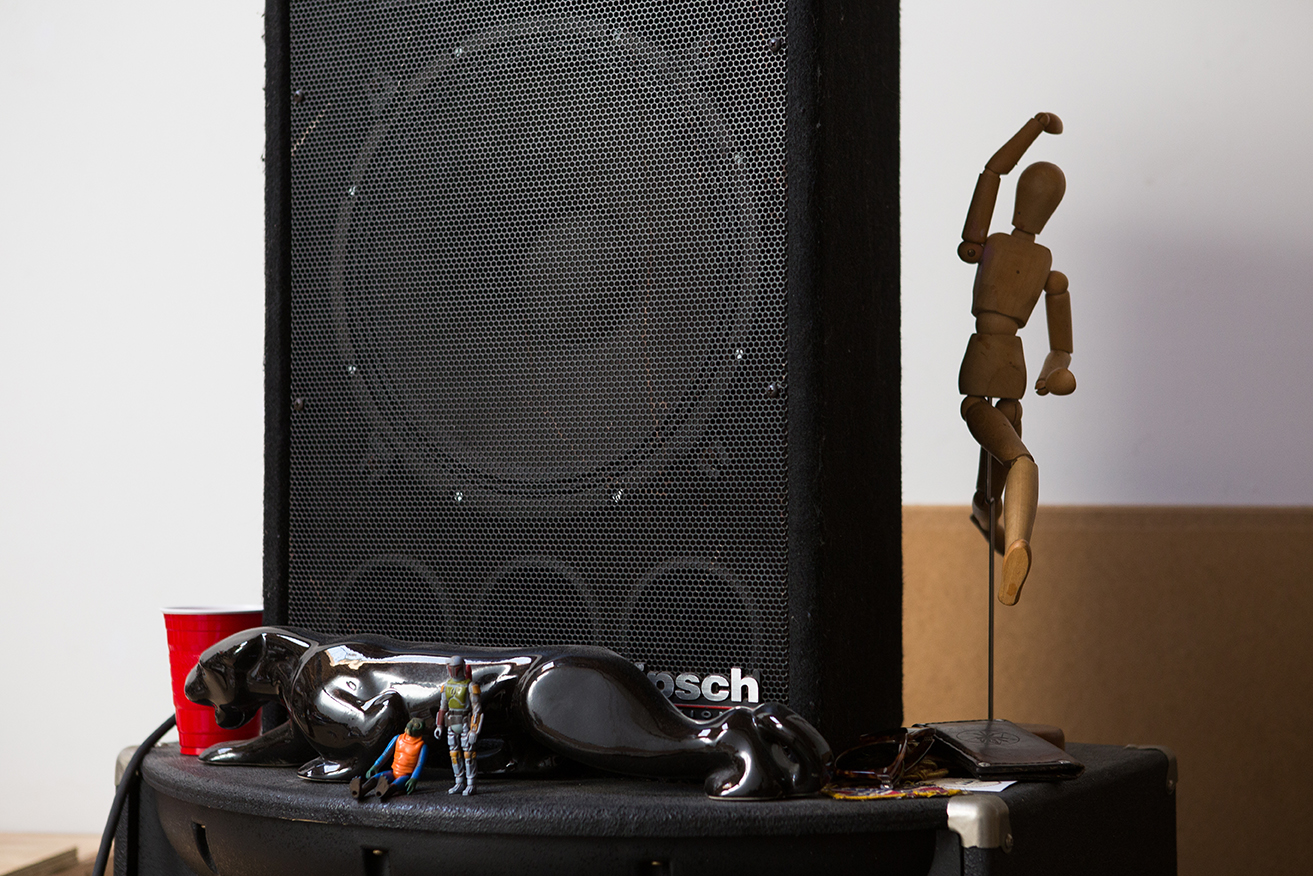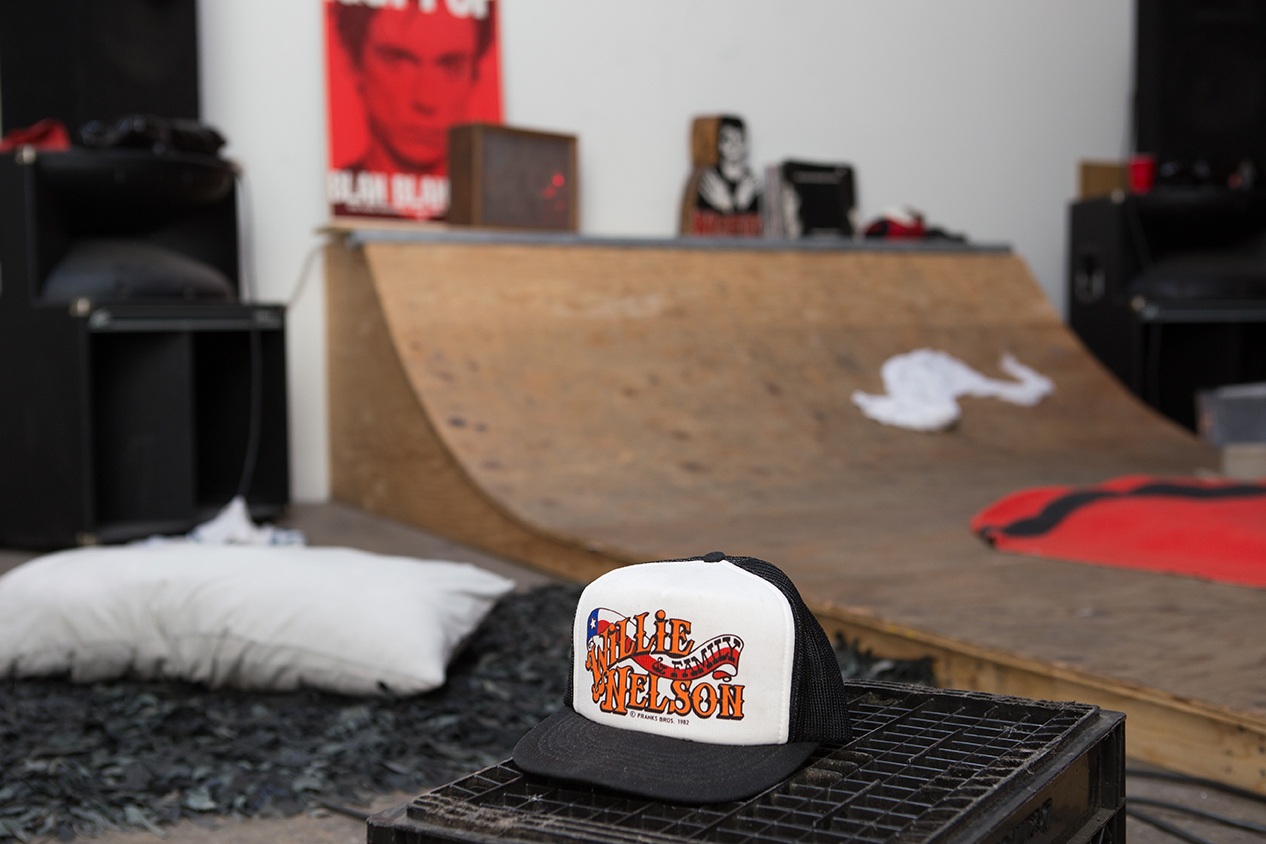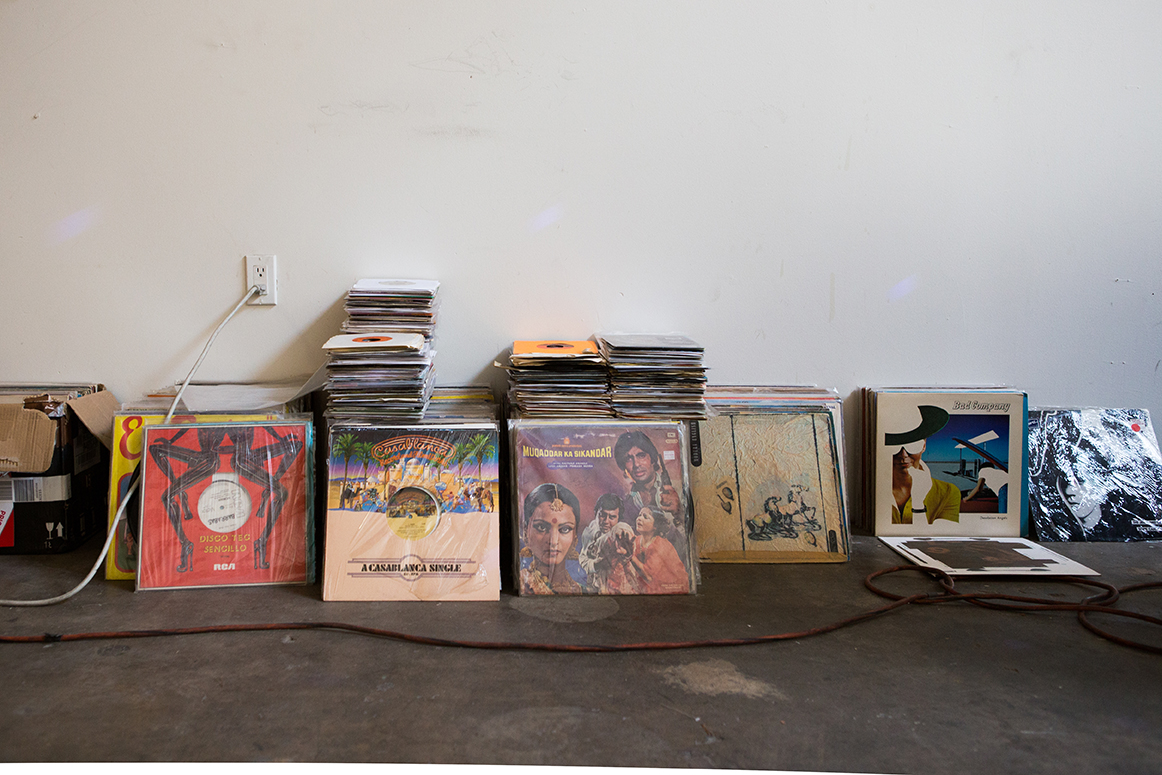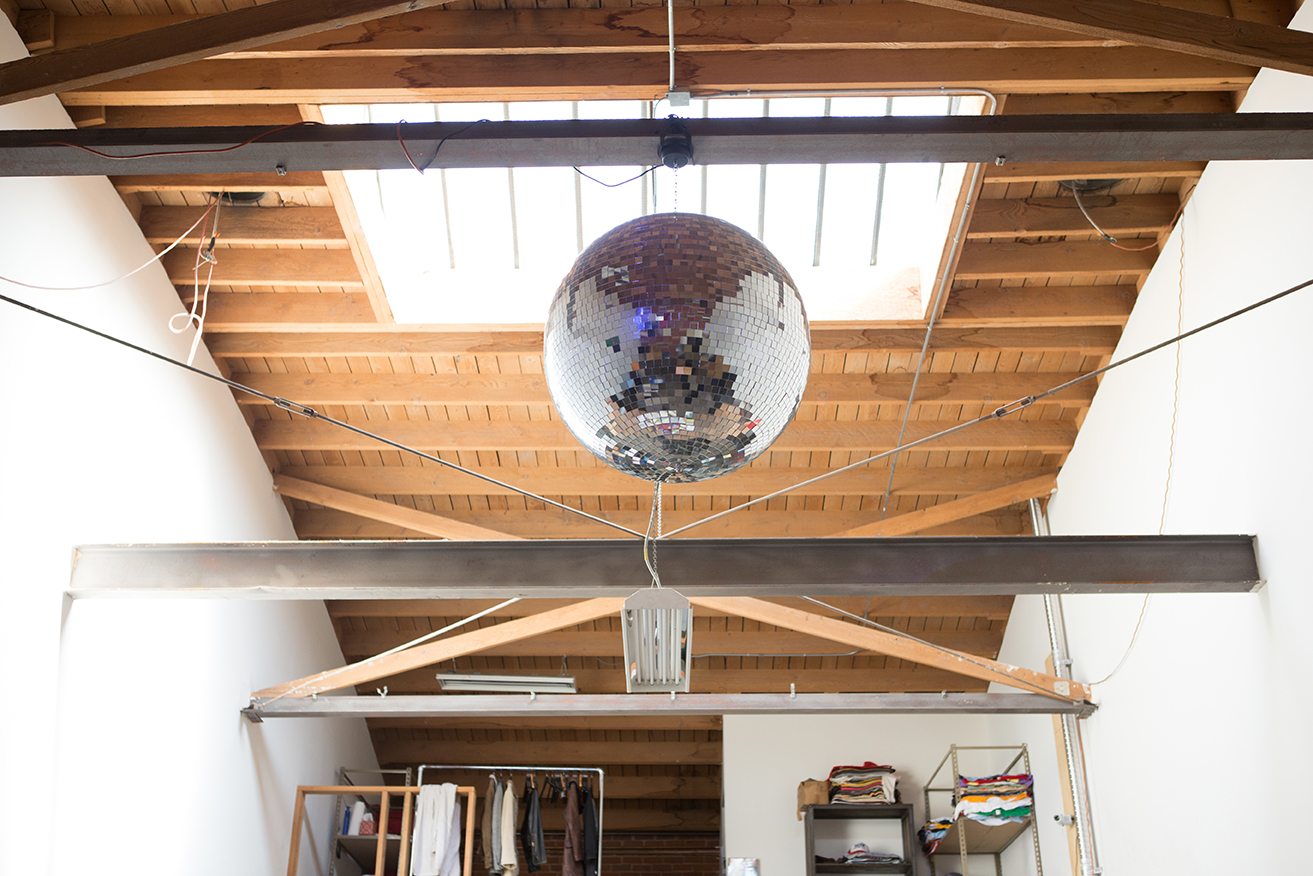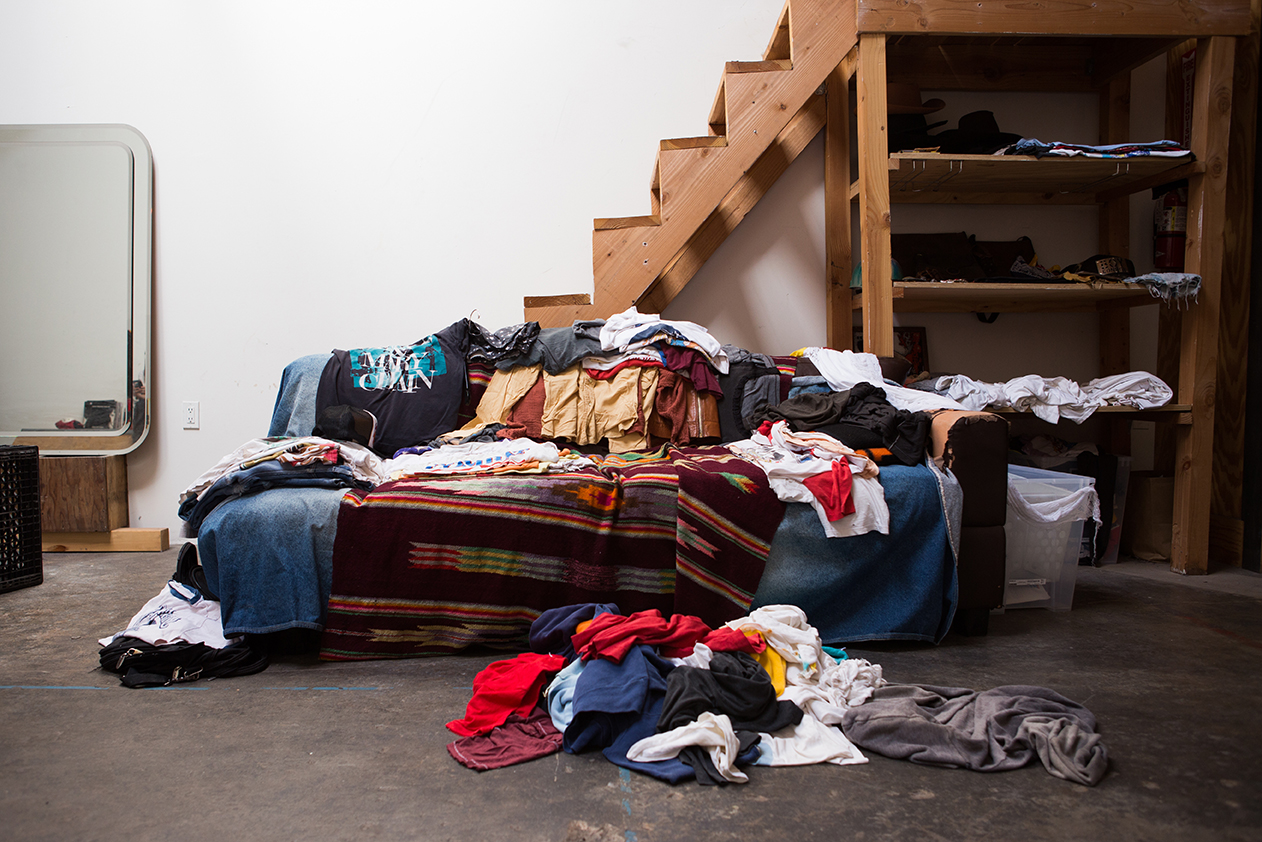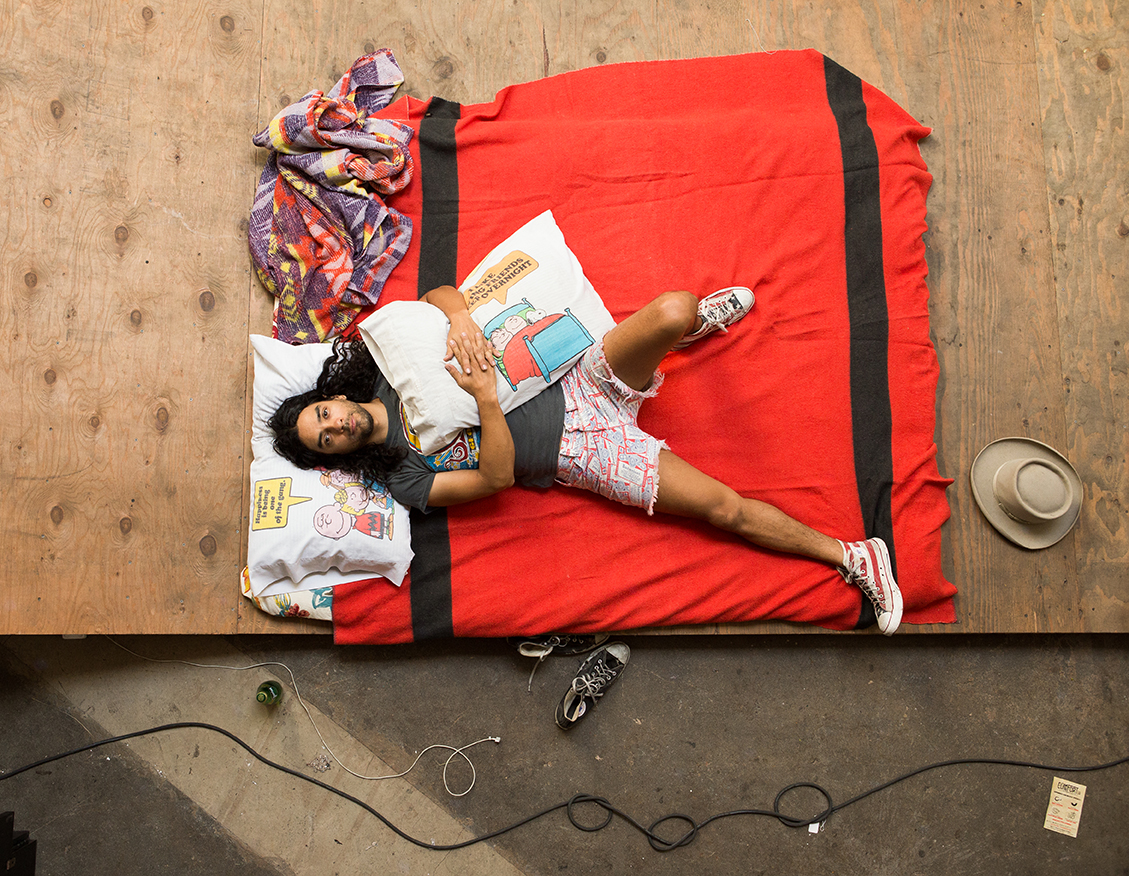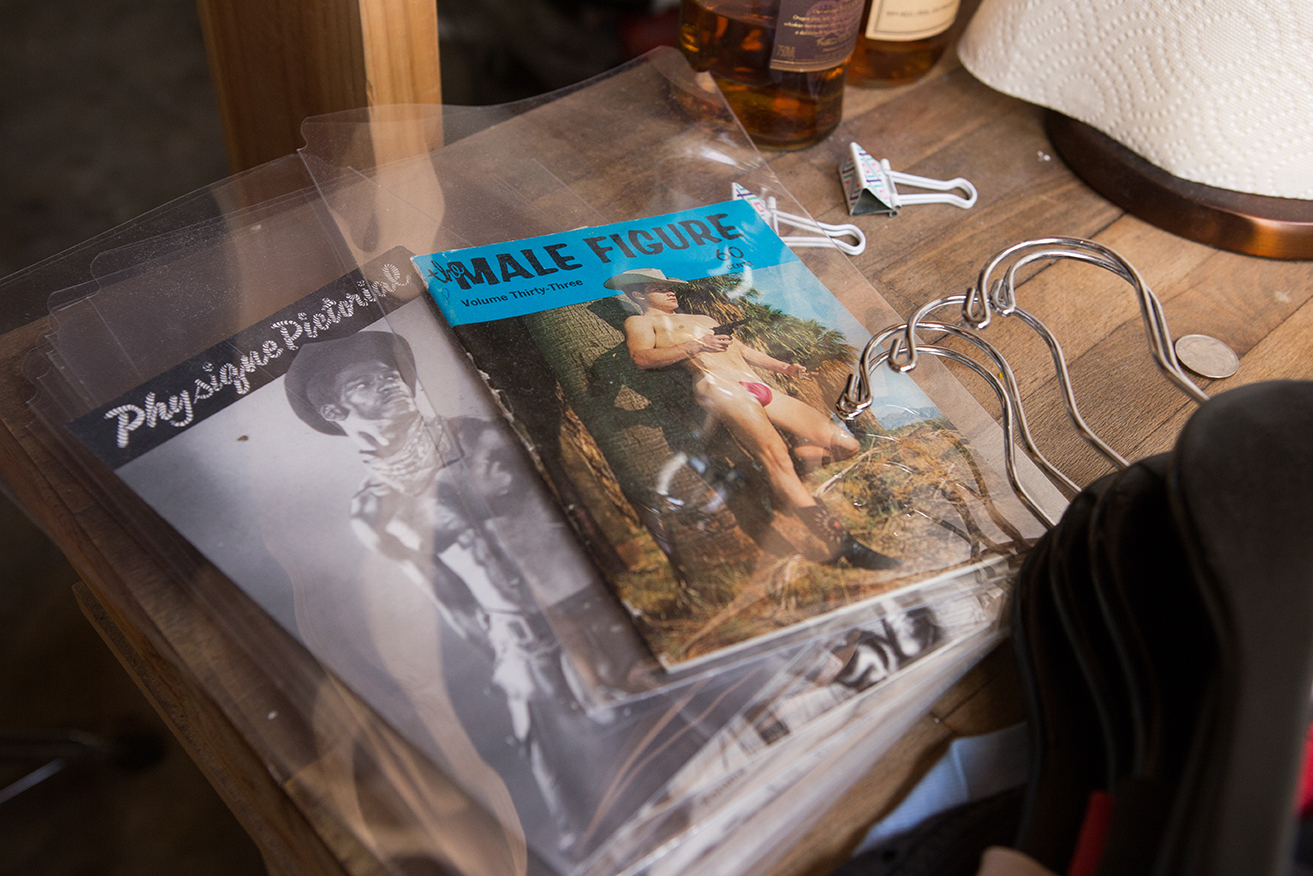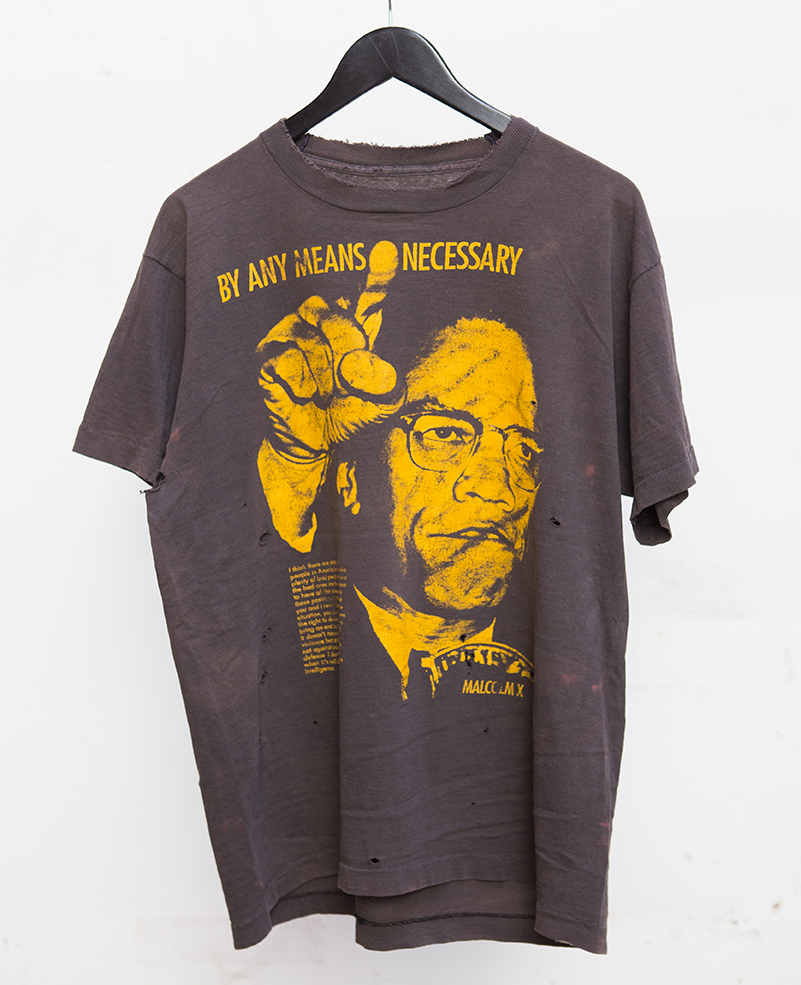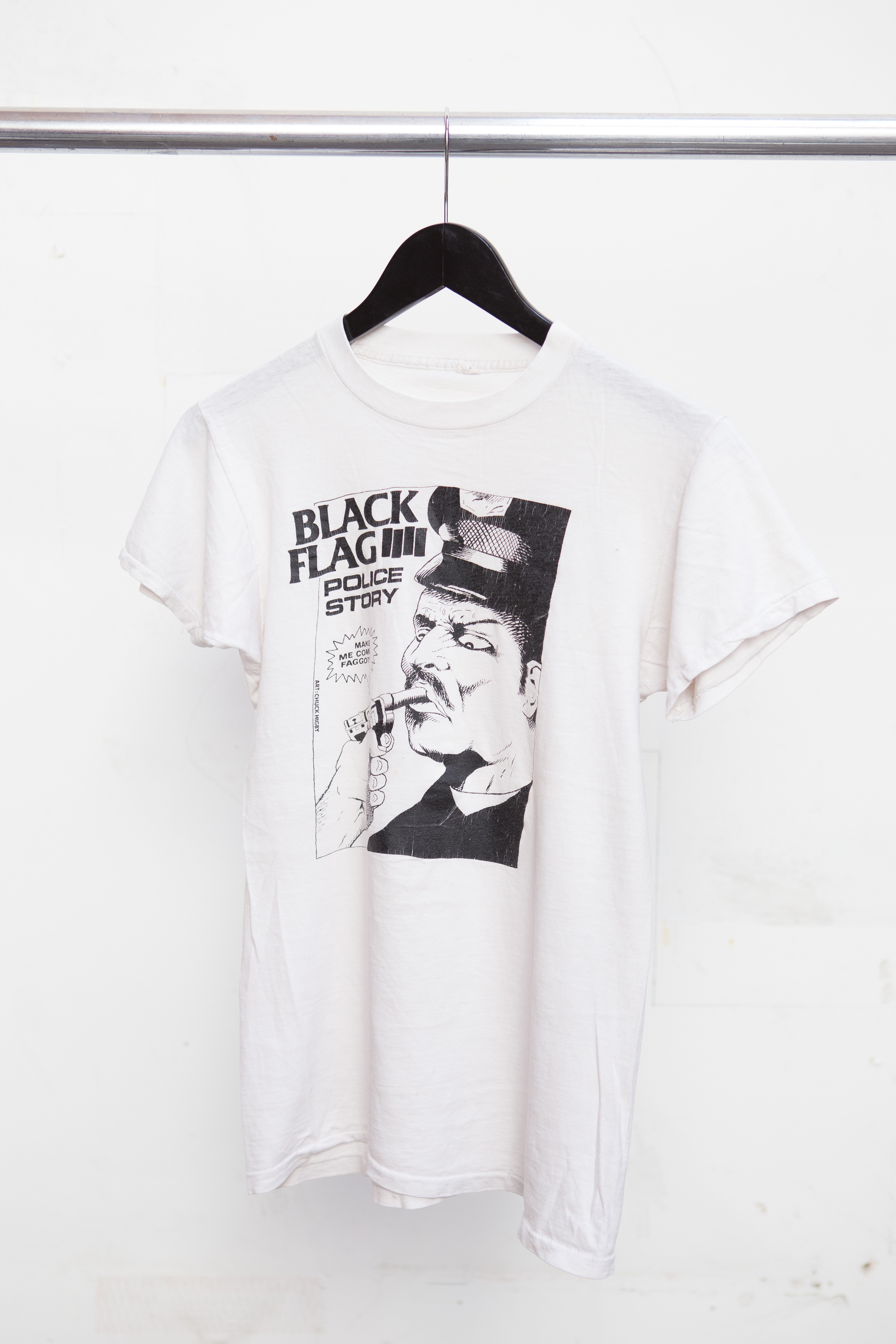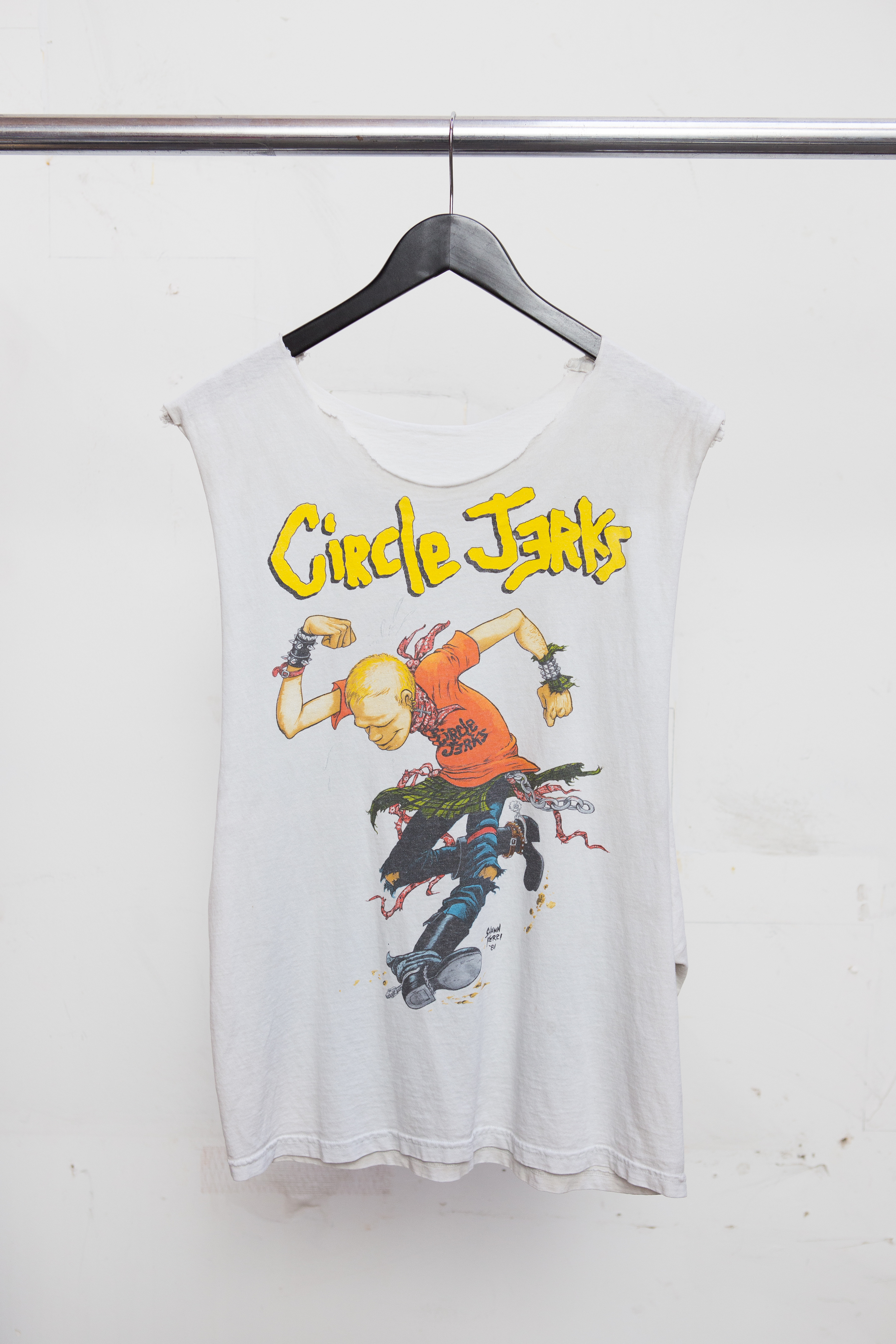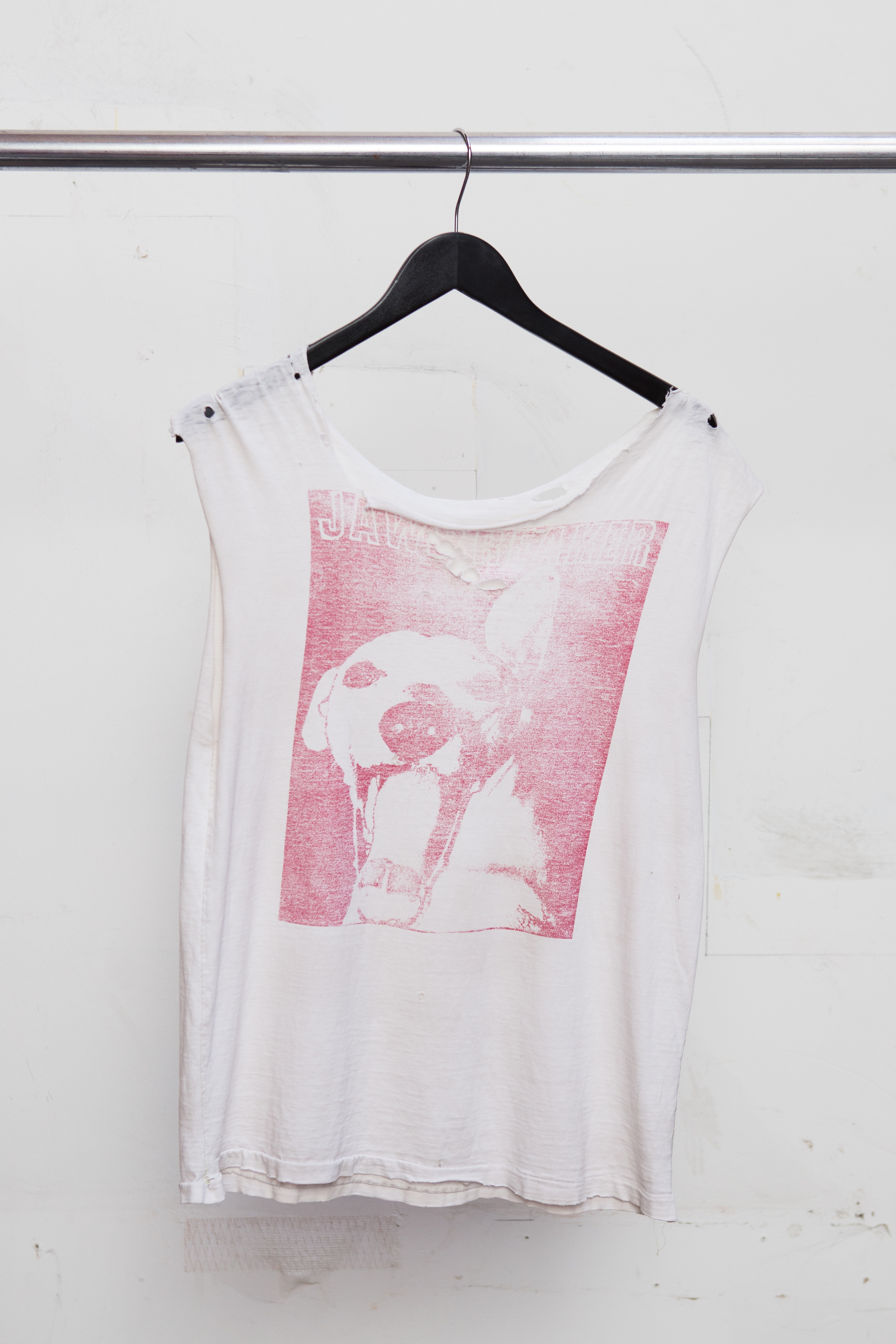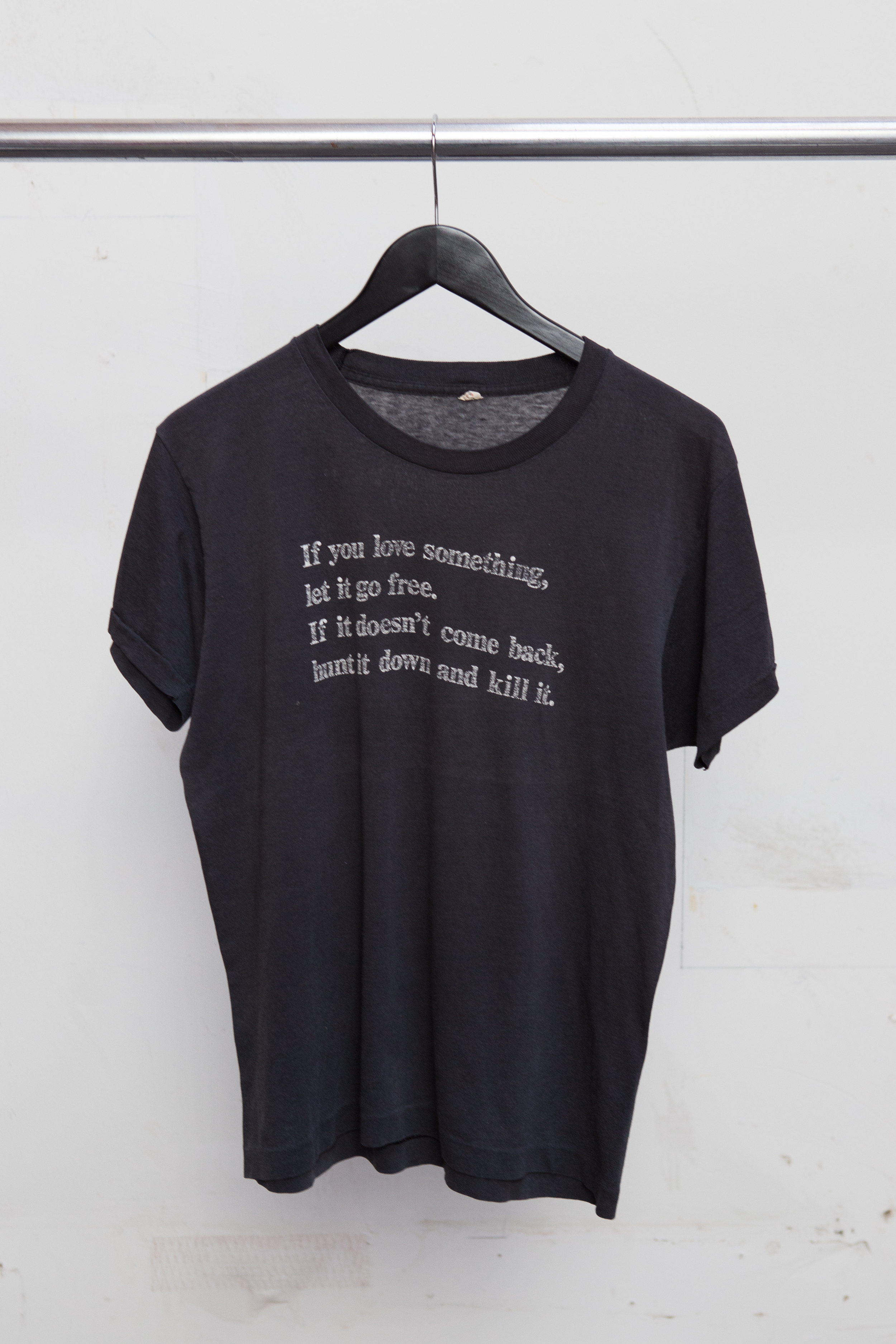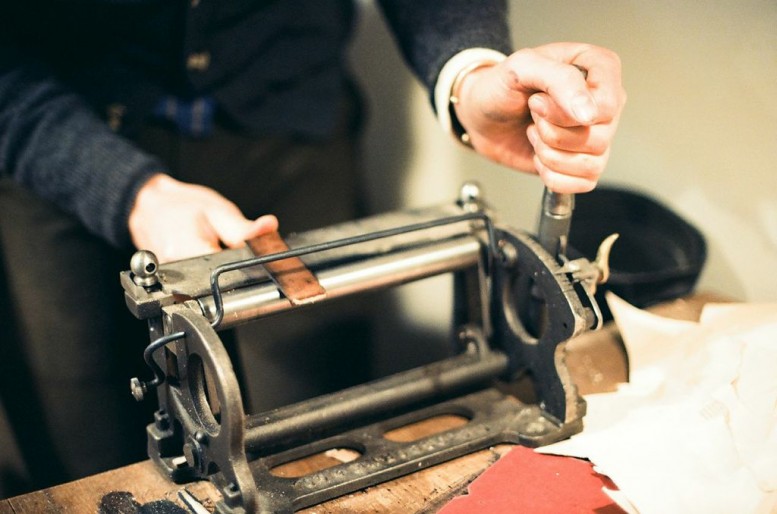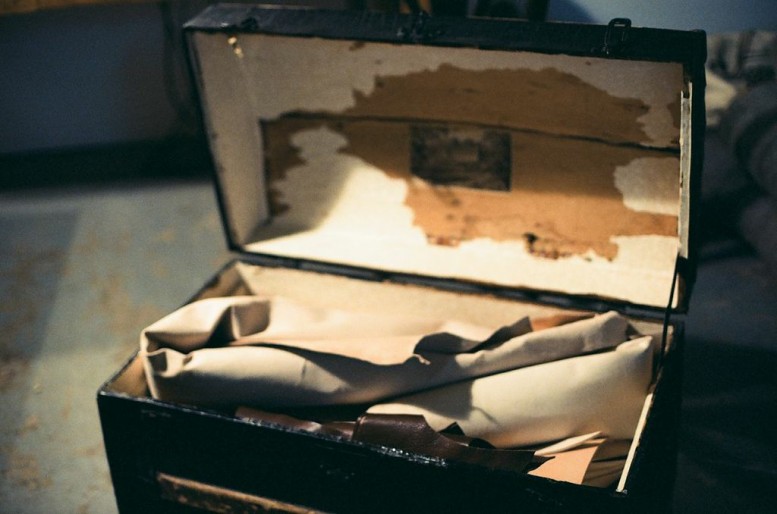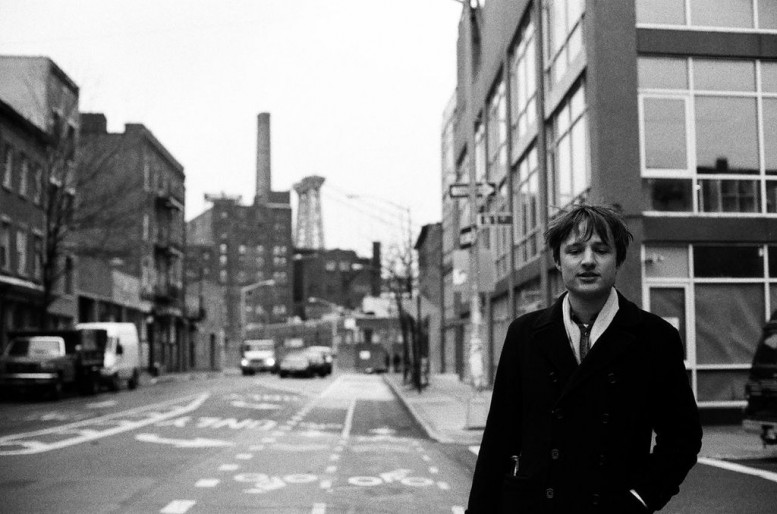On a quick trip to Los Angeles, we caught up with Paris-based designer Yaz Bukey. Her eponymous label is a trompe l’oeil pop art explosion of plexiglass that combines the aesthetics of advertising and everyday objects, like cigarette boxes and lipstick. Bukey is also an Ottoman princess and her ancestors were once the rulers of Egypt. In fact, one of those ancestors, Mehmet Ali Pasha, King of Egypt, gave the Concorde Obelisk to Napoleon. Despite her royal blood, Bukey is more modern than ever. Her collections are inspired by everything from ancient mythology to Boy George. In fact, Boy George is a customer of hers – so is Björk. Lately, Bukey has been eschewing the traditional runway presentation and showing her collections in the form of a performance that is half burlesque and half vaudeville shtick, with a splash of erotic revue. One regular performer is retired gay male pornstar François Sagat. We got a chance to catch up with Bukey in the Hollywood Hills to talk about her work, life and inspiration behind her current collection – as well as her wildly ambitious plans for the future of her label, which includes an all encompassing universe splashed with her vision.
DOUGLAS NEILL: How do you like being in Los Angeles? Is the sunshine inspiring?
YAZ BUKEY: It’s true that we need sun. For me, I love the fact that you can be isolated and at the same time in a big city. This is the thing that I love here. That’s why I would like to move here. My dream would be to have my house with my garden. I love plants. And behind, I have my atelier, and I can work from there.
NEILL: You like having a space for peace?
BUKEY: Yes. I need that, more and more. Before, I was always thinking, “I have to stay in big cities, like Paris, London, or New York.” I think that we really need to be resourced by nature. Here, you have everything – the sea, the gardens, the desert. Everything is here.
NEILL: Your aesthetic is very unique and instantly recognizable. How would you describe it in a word or phrase?
BUCKEY: It’s all about trompe l’oeil. Through this material – Plexiglas – I arrive to have pieces that you don’t know if it is a print, or if it is an object. Same for the home decor that I am starting to make more and more. You can have different pieces that you put on your wall. I like that a clutch can become a box that you have in your house. It’s accessory for yourself and accessory for your home.
NEILL: It transfers well from situation to situation.
BUKEY: I like the fact that, when you wear something, people in the street say, “This reminds me of this movie or that pattern.” It’s storytelling. You don’t need to speak. Just having a piece can pop up images in your eye.
NEILL: What was it like meeting Björk and selling your first collection to her?
BUKEY: That was the first big move that happened when I launched my brand. I was sold in three stores. One was Kokon to Zai in London. They – namely, Marjan Pejoski – are very close to Björk. She did the swan dress and this big pink dress that she wore at the Cannes Film Festival. Before going to going to Cannes to show Dancing in the Dark, Björk went to the store and bought each of the pieces I had made. She started wearing it, and then she contacted me to have pieces for her show. It shifted the brand, actually. She’s so inspiring. I like when people are bold like this, you know? She’s not scared of wearing something weird, something that people can even laugh at. People could say, “Oh, that’s so ugly.” She doesn’t care. That’s a side of her that I like.
NEILL: You are a part of a really fascinating group of artist and designers in Paris. Do you inspire or influence each other?
BUKEY: We have a close group of friends. Each of us is in his own world, of course. The one that is closest to me is Vincent Darré in terms of aesthetics.
NEILL: He has a great personality. He always makes me smile.
BUKEY: He’s a very happy person. There is also Michel Gaubert, who does the music for my show. I love talking to him. Sometimes, he’s like, “Oh, I thought of you when I saw this image.” We have a lot of exchange, whether musical or otherwise. I was more into music before. I wanted to be a singer. But it was not possible due to my family. [Laughs.] They wanted me to go and do political science. I went to study it. But after three months I was like, “I don’t understand what they’re talking about. Please let me do something else.” They accepted that I do something else, but it had to be kind of like mathematics. I figured out that industrial design was not so bad. I went into graphics to be able to be close to the music industry. I wanted to do the album covers. Slowly, that shifted to perfume bottle designing. From there, I met this old lady who was the head of this very famous fashion school in Paris. Vincent went to the same school. Camille Bidault went to that school.
NEILL: Did you guys know each other before school?
BUKEY: No, we were all from different eras of the school. This lady has changed all of our lives.
NEILL: What’s her name?
BUKEY: Marie Rucki. When you arrive to that school, she says, “Everything you learned from your parents is shit. We’re going to empty it and refill it with what you like.”
NEILL: So she is responsible?
BUKEY: She is responsible for a lot of designers. The school has been there for forty years, and she’s still there. She’s over 80.
NEILL: I always attribute creativity to what people do on their own. I always forget that a teacher can be a huge influence.
BUKEY: A teacher can change your life. Or they can make you hate something.
NEILL: There’s a rumor that you are a descendant of royalty. Is this true?
BUKEY: My great great grandfather was the king of Egypt in the beginning of the 19th century. It was a family that ruled from the beginning of 1800 until 1953. The last king was King Farouk. The first was Mehmet Ali Pasha, who comes from Italy and Greece. He was the one who offered the Obelisk to Napoleon when they lost the war against him. For me, the most inspiring person from my father’s family is Princess Fawzia, who was the sister of King Farouk. She was the first wife of the Shah of Iran. She stayed there two years. She was a party girl, and she couldn’t stand it, so she left. She’s beautiful, like a Hollywood actress. I’m going to Egypt next week, actually.
NEILL: What are you doing there?
BUKEY: I have some of my father’s family there – aunts and cousins. In 1953, the family lost all of their houses and mansions – everything. Everything belongs to the state. You can still live in it, but you can’t sell anything. You can’t restore it. It’s unfortunately fading away. I haven’t been in 25 years. I’ll have to hide the tattoos. [Laughs.]
NEILL: For your collections, you stage, dramatic, beautiful, and elaborate scenes, instead of the typical runway show. Are runway shows boring to you?
BUKEY: Very boring. Sometimes, I go to support friends who do shows. All the journalists and stylists, they have so much to see right now. They travel so much. I believe you have to give them something else. I love performing. I used to perform myself, a few years ago. Unfortunately, now, I can’t during my shows, because I need to do the interviews. Being able to take care of the music, the image, the photography, the design, the furniture – for me, it’s a global art. That’s what I like.
NEILL: It’s like a painting.
BUKEY: Yeah. And I like working with the same crew. I like adding newcomers in. Now, we have more and more well-known people who want to be part of the show. They call me and say, “Hey, can I be part of the show next season?” If it fits, I’ll let them do it. I have a little list.
NEILL: Can you give an example?
BUKEY: I would love to work with Marie-Agnès Gillot. She’s one of the main dancers in the Opéra Paris. Right now, it’s not the right moment, because the next collections are not fitting her. At some point, I would love to work with her, having her dancing.
NEILL: I agree. The fashion show is…
BUKEY: It’s so quick. A show is only seven to ten minutes. Very sad.
NEILL: Now, they’re doing it where you can watch the show on the computer and buy it right away.
BUKEY: This is the thing that people started doing to avoid copying. I wish that we just did one collection per year, and that we showed it for Spring/Summer. In the end, it’s a lot of work, a lot of research. You put your heart in there, and it’s only living in the store for two months. The value is down right now. That’s why everyone tries to do things very quickly. You don’t have the time to go deeper into your research. What I liked, back in the day, was that you could be interested in an image or artist, look for it in a library, and then find other things that inspire you even more. It takes you from one spot to the other. That’s what we need right now.
NEILL: That’s exactly how I feel about collecting records.
BUKEY: Collecting records, you go to the store, you search and search. You don’t find what you’re looking for, maybe, but you will find something else.
NEILL: You don’t have enough time to research?
BUKEY: Right now, everything is quick. Three seasons ago, I worked a lot on Bob Fosse’s work. In the end, you speak to the journalists, and they don’t even know who he is. You’re like, “Come on. This is not possible.” [Laughs.] Let me do a few moves for you.


